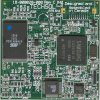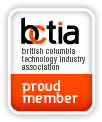Medallion CPU Modules
Techsol Computer Module Introduction
Techsol’s core business is the creation of high-value products powered by our standard computer offerings.
The Medallion Computer Module lines were developed from a “bleeding from the neck” need encountered in the late 1990’s. We developed a custom, embedded background music player for one of the largest companies in that field in North America. It had an Ethernet connection to a satellite IP provider, PATA for either CD or HDD, Audio (of course) and was powered by the freshly minted CL7312 ARM CPU from Cirrus Logic. The project was spread across an applications SW team based in Seattle and our HW and embedded SW teams here in Delta BC.
This project not only sported a 32‑bit ARM processor, but also a commercial RTOS (Kadak’s AMX was chosen, as we’d used it on prior x86 projects dating back to the mid 1980’s). Kadak offered Ethernet drivers for the Cirrus CS8900A Ethernet controller, but we didn’t have PATA drivers for IDE hard-drives. On top of that, we needed CD drivers.
Because of the large SW effort at the embedded level, it took roughly 6 months and $¼ million dollars to get to the point where we had computer boards with an RTOS, Ethernet connections, and both FAT and CD file systems (and RTC, LED, Audio drivers too) so the applications folks could start downloading code and testing.
6 months and $¼ million just to get a 32‑bit platform working. “Wow! That’s a lot of money” we thought. We discovered that 32‑bit processors extended the development time of products, and that 32‑bit operating systems compounded the problems. Longer and more-expensive design cycles prompted Techsol to develop the Medallion CPU module as a tool to reduce development time, cost, and risk. At the time, creating a 50 mm × 50 mm computer with a 32‑bit expansion bus, full video (LCD and VGA signals) plus Audio and USB hosts was pretty radical.
“The MP3 player ran Kadak’s AMX RTOS on the CL7312. It was stunningly fast, especially coming from 25‑MHz 186 designs. But the SW options in AMX were limited, especially for GUIs.” So, after pondering the future of both embedded HW and SW, Techsol decided that HW was moving to ARM processors, and SW would most likely migrate to Linux. “Packaging a Linux-powered ARM computer into a small form factor looked like a great way to help other product developers leapfrog the huge learning curves associated with both technologies. Plus, we could continue to design products for customers, but they’re all Medallion-powered, which dramatically reduces development time and cost.”
We started development of the first Medallion CPU module back in 2000.
Why should you select Techsol’s Medallion Computer modules?
There are 3 main reasons:
- The quality and reliability of our HW designs. Most of this is design. But the use of industrial (not commercial) components also plays a big part. And we’ve been lead‑free, RoHS‑compliant, since 2005!
- Hardware support. We work closely with you to get your product out the door in a timely manner, and keep your production flowing, whether you design the I/O boards or we do.
- Software support. Techsol’s Medallion Linux is the oldest “ARM‑specific” Linux distribution. Though it is mostly open‑source SW, we keep it up‑to‑date to provide the latest features. And for the Freescale processors on the Touch Screen Computer Modules, we’ve replaced their toolchain with ours, based on the programmer-preferred OpenEmbedded toolchain. That will simplify your applications development, and open up more open-source packages to choose from.
Techsol Computer Module Comparison
Techsol’s standard computer offerings can be divided into 2 different standards:
- Conceived in the 1990s, designed starting in 2000, and released in 2002, the original Medallion CPU modules opened new opportunities for our clients, with such new (at the time) features as tiny size, USB Host ports, and DiskOnChip supported under ARM Linux. Now called the Medallion Classic, that form factor is still in production with new devices appearing yearly.
- Conceived in 2007, designed starting in 2009, and released in 2011, we took everything we learned from the classic Medallion CPU module and slashed costs wherever we could to create a low-cost, high-performance, high-quality computer ideally suited for touch screen applications (though it can be used for others). The Touch Screen Computer Module (TSCM) trades off larger size for lower production costs and lower connector costs. In fact, we’ve gone retro to dual-row headers. While we lost most of the parallel bus, we added in Ethernet MAC and PHY, Audio amplifiers, and Lithium Ion battery chargers. But, we didn’t just design a computer, we designed a complete modular product architecture.
Both computer modules share the same toolchain and rich set of SW features. However the hardware differences are many and varied.
This table provides some information to help you choose which style of Medallion CPU Module, Medallion Classic or Touch Screen Computer Module (TSCM), is best for your application.
| Medallion Classic | Touch Screen Computer Module (TSCM) | |||
|---|---|---|---|---|
| Notes | Spec. | Feature | Spec. | Notes |
| Tiny area | 50 mm × 50 mm | Dimensions | 60 mm × 80 mm | Roughly the size of a credit card |
| Minimizes size | Parts on both sides | Construction | Parts on one side | Minimizes cost |
| High density but rugged | 0.6 mm pitch, 240 contacts | Connectors | 2 mm headers, 152 contacts | Minimal cost, bulletproof |
| Proven ARM cores | ARM920T to 250 MIPS | Processors | ARM926ejs to 500 MIPS/Cortex A8 to 1000 MIPS | The latest ARM cores |
| Robust | NOR boot, NAND runtime volume | Boot device | microSD or NAND | Flexible |
| 2 devices | 32–128 MB SDR SDRAM | Main memory (RAM) | 64–128 MB DDR SDRAM | Fast RAM |
| First small computer with USB hosts | 1 or 2 Full-speed USB 2.0 | USB hosts | 1 or 2 High-speed USB 2.0 | High-speed USB |
| 0 or 1 Full-speed | USB Device | 0 or 1 High-speed | Some shared with host (TSCM233) | |
| Device can be OTG | USB On-The-Go (OTG) | Device can be OTG | ||
| Low-cost | 4-wire resistive | Touch screen | 4-wire resistive | Low-cost |
| 18-bit RGB | TFT LCD | 18-bit RGB | ||
| 8‑bit data | ST/STN LCD | 8‑bit data | ||
| Optional | Stereo line‑in/out | Audio | Microphone/Speakers | Optional |
| Optional | 8×11 matrix | Keyscan | None | |
| 8 I/O | GPIO | 8 I/O | ||
| 4 shared with Touch | 8 12‑bit | Analog inputs | 2 12‑bit | |
| 10BaseT/100BaseTX on SA2410E | Ethernet | Integrated MAC (except TSCM233) | PHY optional | |
| UART‑3 supports IrDA | 3 | UARTs | 2 | |
| 1 port | SPI | 1 port | With /CS | |
| 1 port | I²C | 2 ports | 1 HW management, 1 user port | |
| Full expansion capabilities | 32‑bit | External data bus | 8‑bit | On some devices |
| 64 MB (26‑bit) | Address space | 16 (4‑bit) | On some devices | |
| 4 /CS lines, 4 write lanes | Memory addressing | 1 /CS line | On some devices | |
| On‑board reset controller, regulators | 3.3 V | Power | 3.3 V | On‑board reset controller, regulators |










